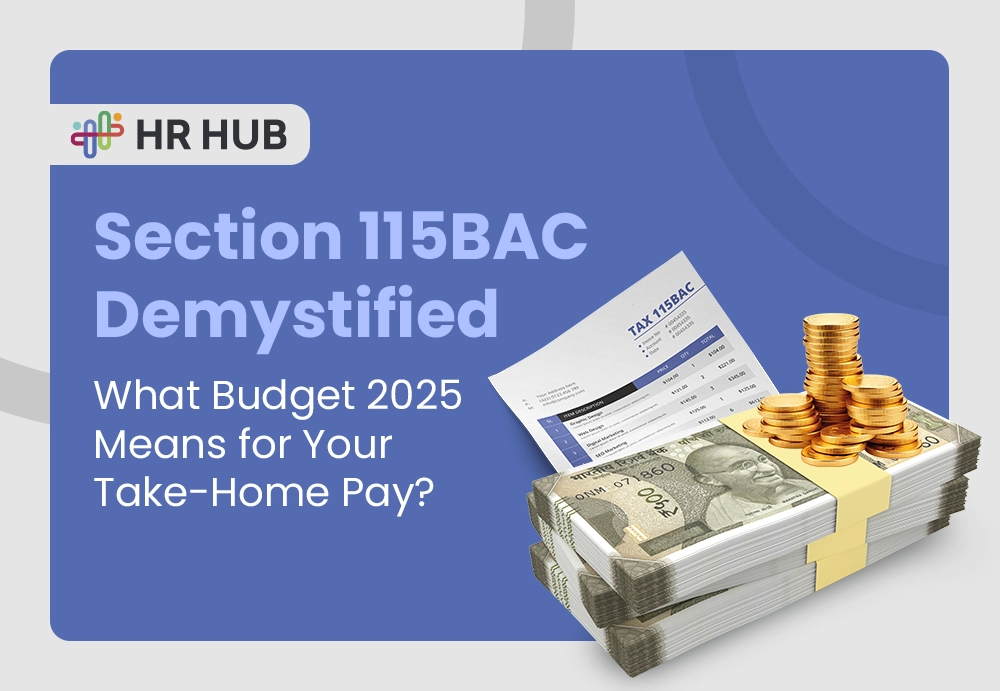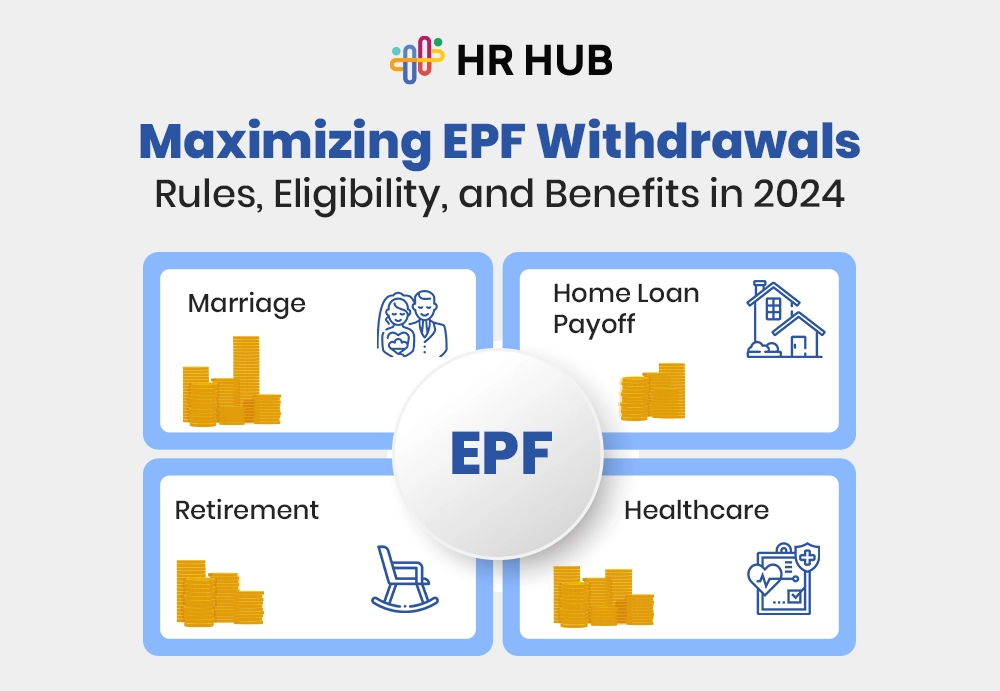


This site uses cookies to deliver our services. By using our site, you acknowledge that you have read and understand our Cookie Policy. Your use of HR HUB's services is subject to these policies.

What if your company’s leave policy could do more than tick boxes?
Imagine a leave structure that not only complies with legal mandates but also boosts employee satisfaction, reduces burnout, and makes your organization genuinely attractive to top talent. That’s the promise behind leave policy benchmarking—a practice that’s turning traditional HR thinking on its head.
But benchmarking is not about mimicry. It’s about learning from the best, localizing purposefully, and strategically crafting a policy that reflects your company's values while respecting global trends.
Let’s examine what the world is doing well and where we need to catch up.
The framework around paid leave rules in India varies widely across states and industries. While the Shops and Establishments Act mandates 12–21 days of paid leave annually (depending on the state), the enforcement and clarity around sick, casual, and earned leaves still feel patchy.
Compare that to Scandinavian countries, where employees enjoy over 25–30 days of paid vacation, which is often mandatory for mental well-being. We're playing on very different fields.
India has made strides, like formalizing paternity leave policies in progressive firms and pushing for menstrual leave discussion, but the approach remains cautious and fragmented.
Benchmarking here isn't about copying foreign standards—it’s about learning how structured, inclusive leave policies are built and how they impact employee retention and morale.
The FMLA (Family and Medical Leave Act) sounds like a solid win on paper. It promises up to 12 weeks of job-protected leave for major life events like childbirth, serious illness, or caregiving for a family member. Sounds fair.
Here’s the twist: it’s completely unpaid.
That one detail creates a seismic gap between policy and practice. How many workers, especially hourly or low-income earners, can realistically afford to take three months off without a paycheck? The result? Many simply don’t take the leave they’re entitled to, even when their health or family desperately needs it.
Let’s make this tangible:
Compare that with countries where paid family leave is the norm, not a privilege.
Benchmarking takeaway: When building a leave policy, mirror the policy and its accessibility. Consider income gaps, job security fears, and cultural expectations because a benefit that can’t be used is not a benefit at all.
Some countries treat leave as a societal obligation rather than an HR checkbox; the results speak volumes.
Let’s visit a few benchmarks:
These nations aren’t just generous—they’re strategic. They’ve embedded leave into their economic planning, workforce retention strategies, and gender equality missions.
Let’s pause here.
Would your company attract more talent if you offered leave that reflected life stages, not just job functions? Benchmarking against these global leaders isn’t about being identical—it’s about being inspired to build leave frameworks that empower people, not just policies.
Maternity leave in 2025 isn’t just about mothers anymore.
Today’s workforce demands policies that recognize:
Let’s talk numbers:
The shift is clear: Maternity leave is becoming Parental Leave. And care is no longer gender-coded.
Organizations that lead in this space aren’t waiting for laws to change. They’re asking: How can we make caregiving a shared, normalized part of the workplace?
Your policy checklist for 2025 should include:
If we only support one version of the family, we leave many behind.
When we say “leave policy,” what comes to mind first? Vacation? Sick days? Maybe maternity leave?
But life isn’t that linear. People fall sick, lose loved ones, burn out, adopt, marry, divorce, or just need to breathe. A well-rounded leave policy should mirror real life, not just office attendance sheets.
Let’s explore the types of leaves modern companies are integrating—and how you can make yours better, fairer, and far more human.
Every employee gets sick, but no one feels safe enough to take a sick day.
In India, sick leave is often lumped into “casual leave,” capped at 7–12 days a year. But here’s the twist: many employees still show up unwell, afraid of being labeled “lazy” or “frequent.”
In contrast, countries like Germany and Canada treat sick leave as a right, not a request. And progressive companies like Atlassian have removed mandatory medical certificates for short absences.
Make it better:
Gone are the days when only new mothers got a few weeks off while others powered through. In 2025, family structures are complex, and leave policies need to catch up.
Modern companies now recognize:

Make it better:
Mental Health Leave: The Quiet Crisis. No one says, “I need a leave because I’m on the verge of crying in the office pantry.”
But they should be able to.
Mental health leave isn’t just a Silicon Valley perk anymore. In Japan, companies are experimenting with “healing leaves.” In the UK, employers openly support mental health days to prevent burnout.
And guess what? Employees who are encouraged to pause come back more energized and more loyal.
Make it better:
“My dad passed away. Can I take two days off?”
That question alone should make us rethink how we handle grief in HR.
In India, most companies offer 2–3 days of bereavement leave. In contrast, Facebook and Microsoft offer up to 20 days. Some firms allow extensions using other leave buckets.
Make it better:
Europe nails this. With mandatory 20–30 days of paid leave, employees are practically pushed to unplug.
In India, we often see a reverse trend—employees hoard leaves, afraid of judgment. Some even lose earned leave during year-end cutoffs.
Make it better:
It’s one thing to talk about global best practices. It’s another to build a policy that works for your people, in your culture, and at your scale.
So, how do you do that without drowning in legal jargon or endless HR debates?
Let’s break it down.
Before you dream up a better leave strategy, take a long, honest look at what you’re working with.
Ask:
Pro Tip: If your leave policy hasn't changed in 3–5 years, it's probably outdated. Employees evolve—your policies should, too.
Use HR HUB’s built-in reports to analyze:
Data speaks. Start listening.
Let’s stop guessing.
Instead of assuming what employees need, just ask them. A simple survey or Slack poll can unlock insights that no global report will ever show.
Try questions like:
Anonymous stories can be game-changers:
“I took sick leave after a miscarriage and had to label it ‘flu’ because we don’t have leave for that.” “My manager approved my vacation but kept calling during it.”
Those stories don’t just inspire change—they demand it.
Global inspiration, local application.
Use platforms like:
Compare:
But remember: benchmarking is not mimicry. It’s about understanding the “why” behind what others are doing—and shaping it to fit your context.
Rigid policies break down in real life.
Build systems that bend without breaking. Let your leave policy adapt to life, not the other way around.
Examples:
Flexibility isn’t chaos—it’s clarity with compassion. Employees don’t just want time off. They want the freedom to take it their way.
Managers are the frontlines of your leave culture.
They can either:
And here’s the kicker: even the best-written policy will fail if your managers gatekeep, micromanage, or “check in” during leaves.
Equip them with:
A good policy protects. A great manager enables.
Something short, visual, and friendly—showing how your company supports leave. Include:
And yes, link it to your intranet. Better yet, embed it into your HR HUB dashboard.
Let’s be real—you're not running a government. You’re running a business.
You can’t just lift and drop Sweden’s leave model into a fast-scaling startup in Mumbai or an SME in Ohio. But here’s the good news: you don’t have to copy—you have to calibrate.
Ask yourself:
Benchmarking is not one-size-fits-all. It’s about finding the sweet spot between inspiration and feasibility. Build a tiered leave policy that reflects:
And remember, flexibility is the new currency of trust. Organizations that allow employees to take time off without guilt, fear, or friction will always win the retention game.
Real benchmarking isn’t about being bigger—it’s about being braver in supporting your people.
As leave policies become more dynamic and globally influenced, HR leaders need tools to keep up with diversity, compliance, and customization.
That’s where HR HUB steps in.
With smart leave configurations, country-specific compliance settings, and real-time leave analytics, HR HUB helps organizations implement globally aware but locally optimized leave policies without the spreadsheet headaches.
Whether you're aligning with paid leave rules in India, monitoring FMLA USA compliance, or preparing for maternity leave 2025 enhancements, HR HUB is your partner in progressive policy-making.
After all, the best leave policies aren’t copied. They’re crafted with vision.



Ready to streamline your HR processes? Contact us today to learn how HR HUB can help your organization thrive. Fill out the form, and one of our experts will reply shortly. Let's empower your workforce together!
